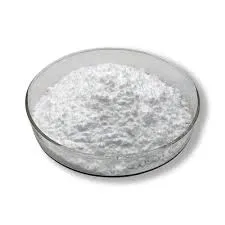
Jul . 21, 2024 01:51 Back to list
Overview of the Manufacturing Process for Redispersible Polymer Powder Production Techniques and Applications
The Manufacturing Process of Redispersible Polymer Powder
Redispersible polymer powder (RDP) is an essential ingredient in various applications, including construction materials, adhesives, and coatings. Its unique properties—such as improved bonding, flexibility, and water resistance—make it a valuable additive in many formulations. The production of RDP involves a complex manufacturing process that ensures the polymer's integrity, performance, and compatibility with other materials. This article outlines the key steps in the manufacturing process of redispersible polymer powder.
1. Selection of Raw Materials The first step in the RDP manufacturing process is the careful selection of raw materials. The primary components typically include polymers derived from vinyl acetate, ethylene, styrene, or acrylic. The choice of polymer depends on the desired properties of the end product and its intended application. In addition to the base polymer, various additives, such as stabilizers, fillers, and surfactants, are incorporated to enhance attributes like solubility, dispersibility, and flowability.
2. Polymerization Once the raw materials are selected, the next phase involves polymerization, a chemical process that transforms monomers into high molecular weight polymers. This can be achieved through different methods, such as emulsion polymerization, suspension polymerization, or solution polymerization. The choice of method significantly influences the final properties of the polymer, including its particle size, surface characteristics, and degree of cross-linking.
During emulsion polymerization, for example, monomers are dispersed in water with the help of surfactants, and temperatures are controlled to facilitate the reaction. The result is a stable emulsion containing polymer particles that can be further processed.
redispersible polymer powder manufacturing process

3. Drying Process Following polymerization, the resulting dispersion must be converted into a powder form. This is typically accomplished through a drying process, which can include spray drying or freeze drying. In spray drying, the polymer emulsion is atomized into fine droplets and introduced into a heated chamber where the water rapidly evaporates, leaving behind dry polymer powder. Freeze drying, on the other hand, involves freezing the polymer dispersion followed by sublimation of ice under vacuum conditions, ensuring the retention of the polymer's structural properties.
4. Post-processing After obtaining the dry powder, post-processing steps are crucial to ensure product quality. This may involve milling to achieve the desired particle size distribution and sieving to remove agglomerates. Additionally, the powder may be treated with anti-caking agents to improve flow characteristics and prevent clumping during storage and handling.
5. Quality Control Quality control is an integral part of the RDP manufacturing process. Various tests are performed to evaluate the physical and chemical properties of the powder, such as particle size distribution, moisture content, and polymer morphology. These tests ensure that the final product meets industry standards and customer specifications.
6. Packaging and Storage The final step in the manufacturing process is packaging. Redispersible polymer powder is typically packaged in moisture-proof bags or containers to prevent clumping and degradation during storage. Proper packaging is vital for maintaining the product's usability and extending its shelf life.
In conclusion, the manufacturing process of redispersible polymer powder is intricate and requires meticulous attention to detail. From the selection of raw materials to the final packaging, each step plays a critical role in producing a high-quality product that meets the diverse needs of various industries. With continued advancements in polymer chemistry and processing technologies, the application potential for RDP is set to grow, offering innovative solutions across multiple sectors.
-
Versatile Hpmc Uses in Different Industries
NewsJun.19,2025
-
Redispersible Powder's Role in Enhancing Durability of Construction Products
NewsJun.19,2025
-
Hydroxyethyl Cellulose Applications Driving Green Industrial Processes
NewsJun.19,2025
-
Exploring Different Redispersible Polymer Powder
NewsJun.19,2025
-
Choosing the Right Mortar Bonding Agent
NewsJun.19,2025
-
Applications and Significance of China Hpmc in Modern Industries
NewsJun.19,2025







